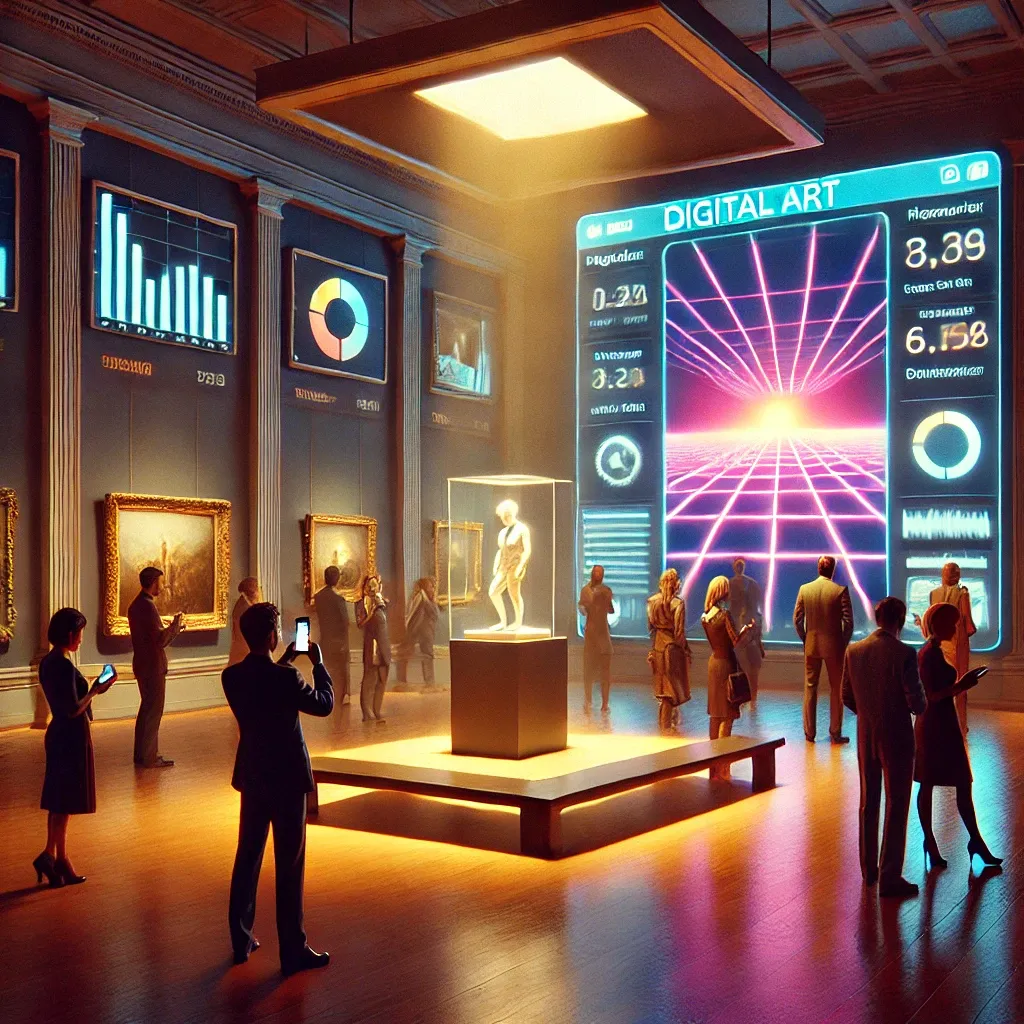The inclusion of digital art in contemporary museums provokes both celebration and skepticism, highlighting the complexities and contradictions of its legitimization within the cultural field. On one hand, museums provide digital art with a platform for recognition, helping to consolidate it as a legitimate form of artistic expression. On the other hand, the way these institutions present and contextualize such works often reinforces the neoliberal logic of spectacularization and consumption, transforming what should be a space for critical reflection into a showcase for superficial entertainment.
Museums, as historical guardians of culture, have the capacity to preserve and promote digital art, ensuring its longevity and study for future generations. By exhibiting digital works, institutions such as Documenta or major international museums elevate the status of digital art, generating symbolic capital that can be converted into cultural recognition and even commercial success. For many digital artists, this institutional presence represents an opportunity for legitimization, expanding the reach of their work to audiences who might otherwise never engage with this form of art. However, this legitimization is not without contradictions.
Spectacularization emerges as one of the most controversial aspects of the inclusion of digital art in museums. Curators often prioritize visually striking, technologically advanced, or interactive works designed to attract large audiences. While this approach broadens the appeal of digital art, it can also diminish its critical and conceptual impact. Art is presented as a technological spectacle, focusing on gadgets and special effects, while its deeper dimensions, such as social critique or reflection on technology itself, are neglected. In this context, visitors are invited to consume the artistic experience passively, pressing buttons and admiring visual effects without critical engagement.
Moreover, the ease of reproduction and modification inherent in digital art poses a direct challenge to the traditional notions of originality and authorship historically valued by museums. While some institutions strive to adapt to these characteristics, others resort to strategies that paradoxically reinforce neoliberal logic, such as incorporating NFTs or commercializing exclusive artistic experiences. Digital art, which could subvert the values of uniqueness and scarcity in the art market, ends up being absorbed by these same dynamics, creating a tension between its expansive nature and the restrictions imposed by the market.
Another critical point is the relationship between artists, museums, and the market. Many digital artists, in their quest for institutional recognition, face pressure to adapt their works to the expectations of spectacularization or the commercial demands of the neoliberal system. This can lead to the creation of works that prioritize visual or technological impact over conceptual innovation. Meanwhile, museums, often reliant on corporate sponsorships and private funding, become complicit in the commodification of digital art. Rather than fostering diversity and experimentation, they reinforce trends already validated by the market, excluding critical or marginalized voices.
The impact on the public is also significant. Although digital art has the potential to democratize access to culture by allowing more people to experience innovative forms of artistic expression, this democratization is often limited by economic and institutional barriers. The public is transformed into consumers, and the artistic experience is reduced to a market product. Interaction with the artwork, which should be an opportunity for reflection and engagement, often becomes a superficial experience shaped by entertainment demands.
The presence of digital art in museums is, therefore, both an opportunity and a challenge. While it contributes to its legitimization and valorization, it also risks subsuming this art form into the same forces that seek to commodify it. Recognizing these contradictions is essential for museums to play a more active role in promoting critical, diverse, and accessible digital art that transcends the limitations imposed by neoliberalism.
Victor T. Murari
Art History, Education & Artificial Intelligence | PhD | Advancing Educational and Cultural Narratives through AI Integration

